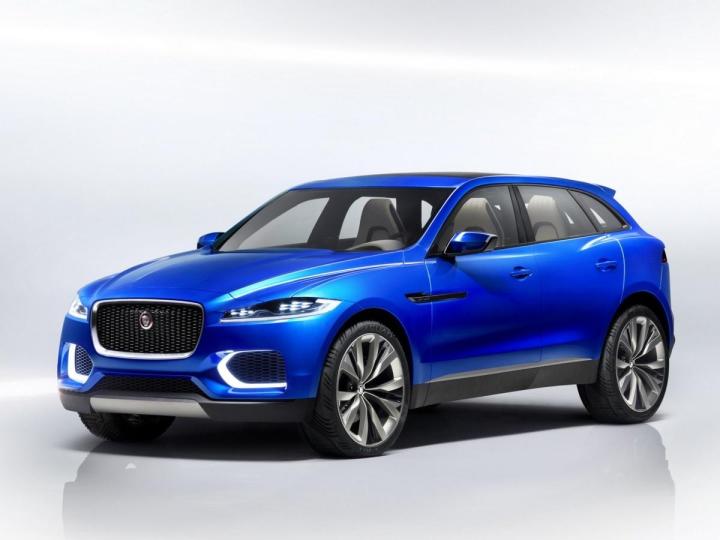
What’s the one thing that is wrong with the Range Rover Evoque? Is it too small? Is it too expensive? Is it too good looking? Is it too capable off road?
If those are the answers you gave, you’ll absolutely love the latest Jaguar C-X17 crossover concept pictured above.
Although the latest Jag is slated for its official debut in a few days on the floor of the Frankfurt Auto Show, a few images have leaked to the web via Carscoops.
The C-X17 is a concept but looks nearly production ready. Likely, Jaguar will tone down the interior slightly as it looks more vodka bar than British luxury cabin with its blue lights and space age seats.
What we do hope continues on to the production model are what appear to be touch sensitive, virtual infotainment and climate control dials.
We don’t yet know what will be under the hood of the C-X17 but it’s likely to be a version of the Range Rover Evoque’s Ford EcoBoost-based turbo four-cylinder. We’d rather see the supercharged 3.0-liter V6 from the F-Type but that’ll probably be saved for a sporty R variant of the crossover to compete with the forthcoming Audi SQ5.
While that all sounds fine and dandy, we have one bit of bad news: Jaguar has insisted its crossover won’t be at all as off-road capable of its cousin, the Evoque. Instead, it will focus on performance and luxury.
Why would any one buy it, then? Want Jag performance? Get an XF. Want off road luxury? Get a Range Rover. We’re not quite sure what Jag was thinking on this one.


